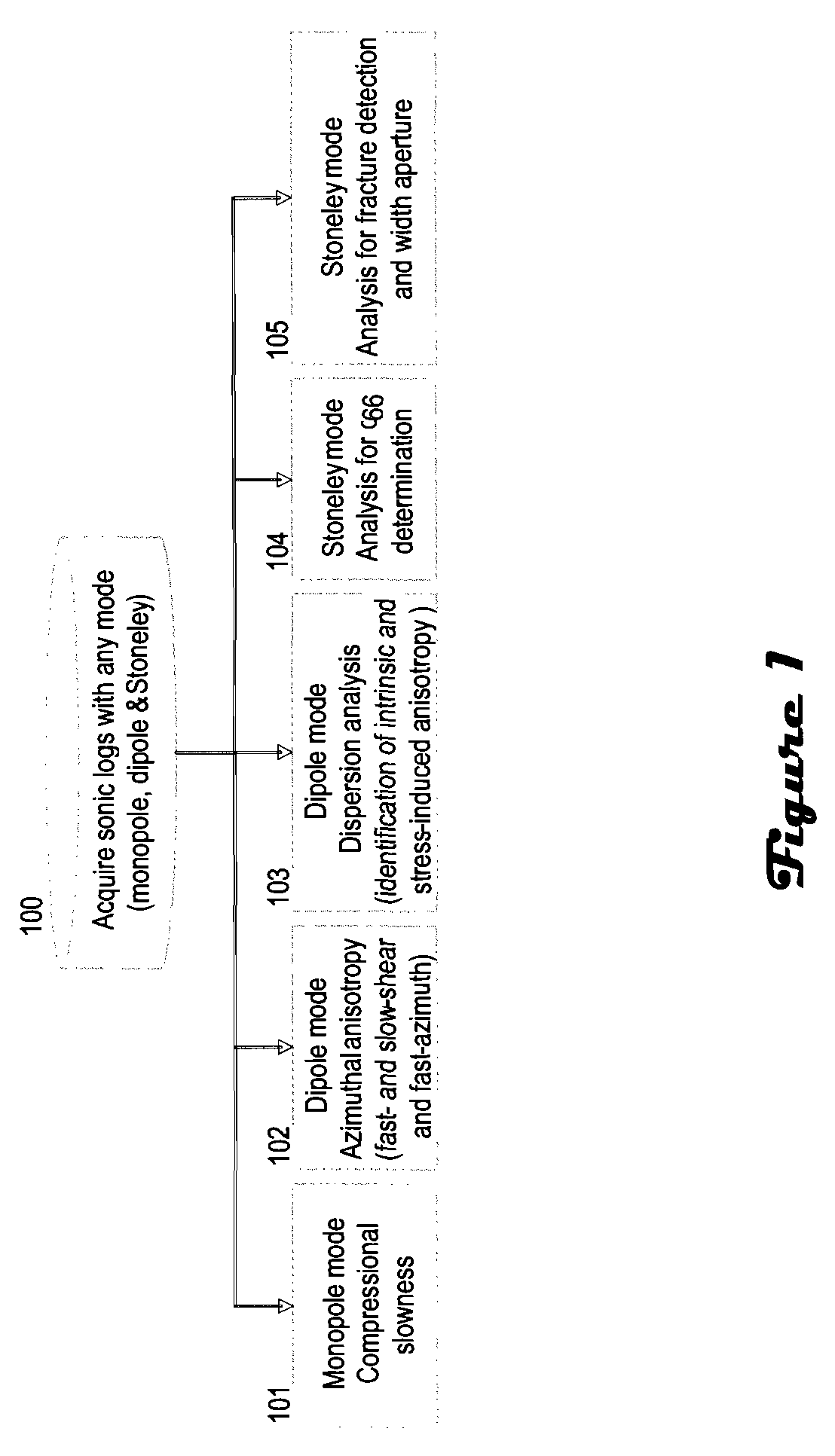Discriminating natural fracture- and stress-induced sonic anisotropy using a combination of image and sonic logs
a sonic anisotropy and image technology, applied in the field of borehole geology and geophysics, can solve the problems of difficult interpretation, difficult interpretation of observed anisotropy, and inability to discriminate and achieve the effect of discriminating the relative effects of natural fracture- and stress-induced sonic anisotropy and a forward quantitative modeling techniqu
- Summary
- Abstract
- Description
- Claims
- Application Information
AI Technical Summary
Benefits of technology
Problems solved by technology
Method used
Image
Examples
Embodiment Construction
[0010]Referring to FIGS. 1 and 2, in an initial step (100), sonic logs are acquired with any one or combination of available modes, including, but not limited to, monopole, dipole and Stoneley. Monopole P- and S-waves, monopole Stoneley and cross-dipole shear sonic data associated with an anisotropic formation are used to estimate one compressional and three shear moduli. An orthorhombic formation with a vertical symmetry axis is characterized by three shear moduli: c44, c55 and c66.
[0011]The sonic logs acquired in step (100) are processed in preparation for identification and evaluation of sonic anisotropic slowness properties. As shown in step (101), monopole mode compressional slowness is identified. The compressional slowness from the monopole mode is used as an input in step (221). As shown in step (102), shear anisotropy is identified from the dipole mode data. In a vertical borehole, two vertical dipole shear moduli (c44 and c55) are directly estimated from azimuthal anisotro...
PUM
 Login to View More
Login to View More Abstract
Description
Claims
Application Information
 Login to View More
Login to View More - R&D
- Intellectual Property
- Life Sciences
- Materials
- Tech Scout
- Unparalleled Data Quality
- Higher Quality Content
- 60% Fewer Hallucinations
Browse by: Latest US Patents, China's latest patents, Technical Efficacy Thesaurus, Application Domain, Technology Topic, Popular Technical Reports.
© 2025 PatSnap. All rights reserved.Legal|Privacy policy|Modern Slavery Act Transparency Statement|Sitemap|About US| Contact US: help@patsnap.com



